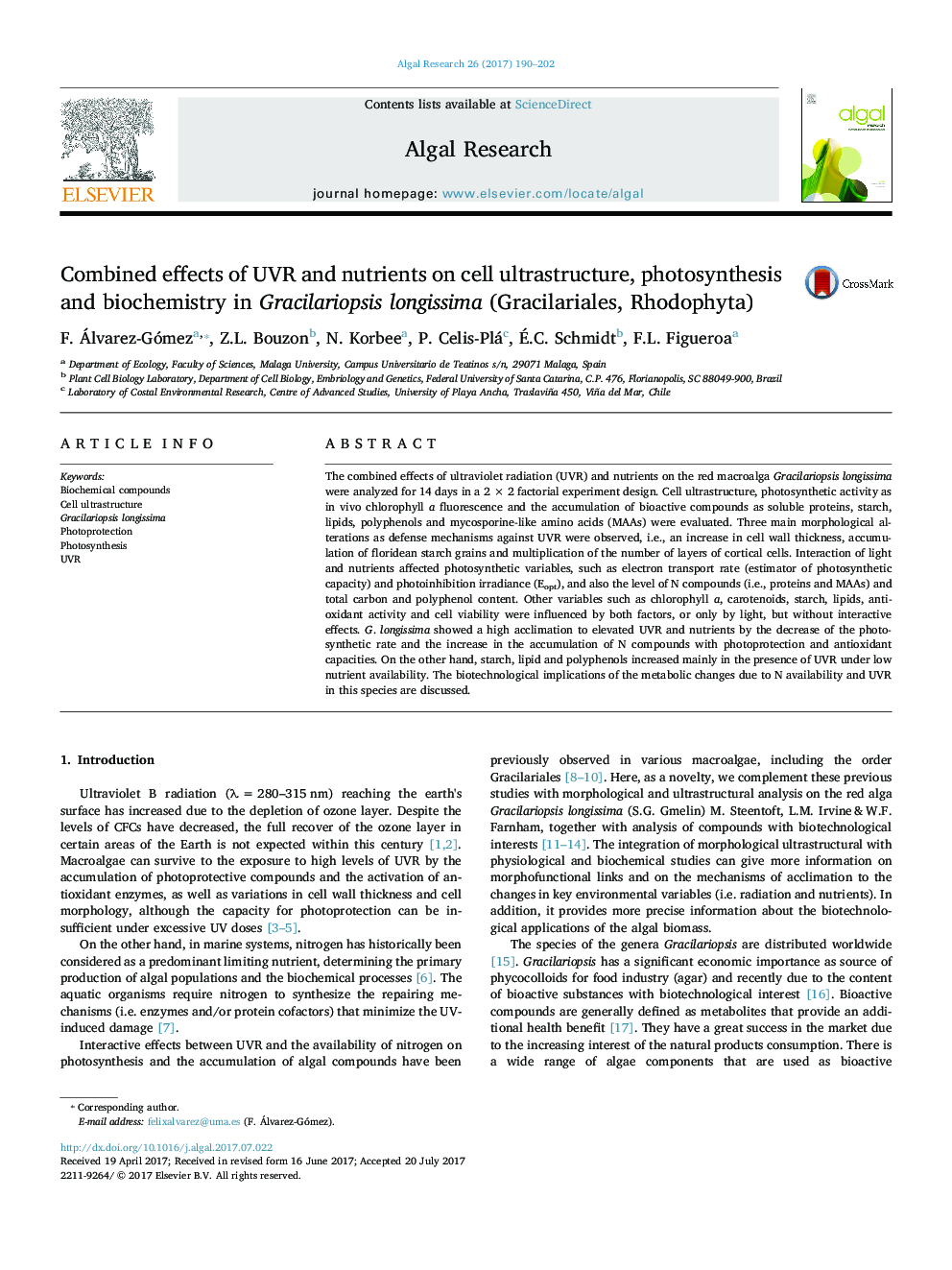| Article ID | Journal | Published Year | Pages | File Type |
|---|---|---|---|---|
| 5478269 | Algal Research | 2017 | 13 Pages |
Abstract
The combined effects of ultraviolet radiation (UVR) and nutrients on the red macroalga Gracilariopsis longissima were analyzed for 14Â days in a 2Â ÃÂ 2 factorial experiment design. Cell ultrastructure, photosynthetic activity as in vivo chlorophyll a fluorescence and the accumulation of bioactive compounds as soluble proteins, starch, lipids, polyphenols and mycosporine-like amino acids (MAAs) were evaluated. Three main morphological alterations as defense mechanisms against UVR were observed, i.e., an increase in cell wall thickness, accumulation of floridean starch grains and multiplication of the number of layers of cortical cells. Interaction of light and nutrients affected photosynthetic variables, such as electron transport rate (estimator of photosynthetic capacity) and photoinhibition irradiance (Eopt), and also the level of N compounds (i.e., proteins and MAAs) and total carbon and polyphenol content. Other variables such as chlorophyll a, carotenoids, starch, lipids, antioxidant activity and cell viability were influenced by both factors, or only by light, but without interactive effects. G. longissima showed a high acclimation to elevated UVR and nutrients by the decrease of the photosynthetic rate and the increase in the accumulation of N compounds with photoprotection and antioxidant capacities. On the other hand, starch, lipid and polyphenols increased mainly in the presence of UVR under low nutrient availability. The biotechnological implications of the metabolic changes due to N availability and UVR in this species are discussed.
Related Topics
Physical Sciences and Engineering
Energy
Renewable Energy, Sustainability and the Environment
Authors
F. Álvarez-Gómez, Z.L. Bouzon, N. Korbee, P. Celis-Plá, Ã.C. Schmidt, F.L. Figueroa,
